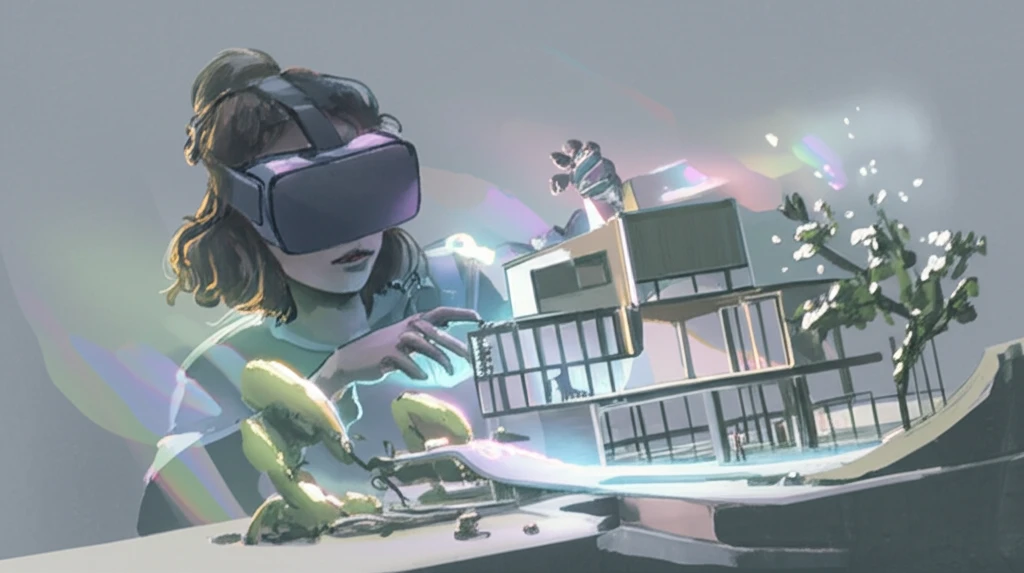
Step Inside: The Future of Design with VR and Scale Models
"Explore how virtual reality is revolutionizing architecture and design, offering immersive first-person perspectives within physical scale models."
For decades, architects and designers have relied on scale models to visualize, discuss, and refine their concepts for large-scale projects. These models offer a tangible representation, providing a bird's-eye view that aids in understanding spatial relationships. However, they often lack a realistic, first-person perspective, making it challenging to truly grasp the impact of design choices within the space.
Imagine being able to step inside a scale model and experience the space as if you were actually there. This is the promise of MacroScope, a cutting-edge tool that integrates virtual reality (VR) with physical scale models. By providing a real-time, 360° first-person perspective, MacroScope allows designers to collaboratively explore and evaluate their ideas in a more immersive and intuitive way.
This innovative approach has the potential to revolutionize various creative processes. Think of interior design, architectural planning, or even stage design—all enhanced by the ability to virtually inhabit and interact with a scaled environment before construction even begins.
MacroScope: Merging Physical and Virtual Realities

MacroScope bridges the gap between traditional scale models and immersive VR experiences. It addresses the limitations of conventional models, which only offer a top-down view, by allowing users to experience the space from a human perspective. This is achieved through a VR headset that displays a live, 360° video stream captured from within the physical scale model.
- Enhanced Collaboration: MacroScope facilitates more effective communication and collaboration among designers, clients, and stakeholders.
- Improved Design Evaluation: The first-person perspective allows for a more realistic assessment of design choices and their impact on the user experience.
- Early Issue Detection: By virtually experiencing the space, designers can identify potential problems and make adjustments before construction begins, saving time and resources.
- Versatile Applications: MacroScope can be applied to a wide range of design projects, including architecture, interior design, urban planning, and stage design.
The Future of Immersive Design
MacroScope represents a significant step forward in the integration of VR technology into the design process. By providing an immersive, first-person perspective within physical scale models, it empowers designers to explore, evaluate, and communicate their ideas in a more intuitive and collaborative way. As VR technology continues to advance, we can expect to see even more innovative applications of this approach, transforming the way we design and experience the built environment.
